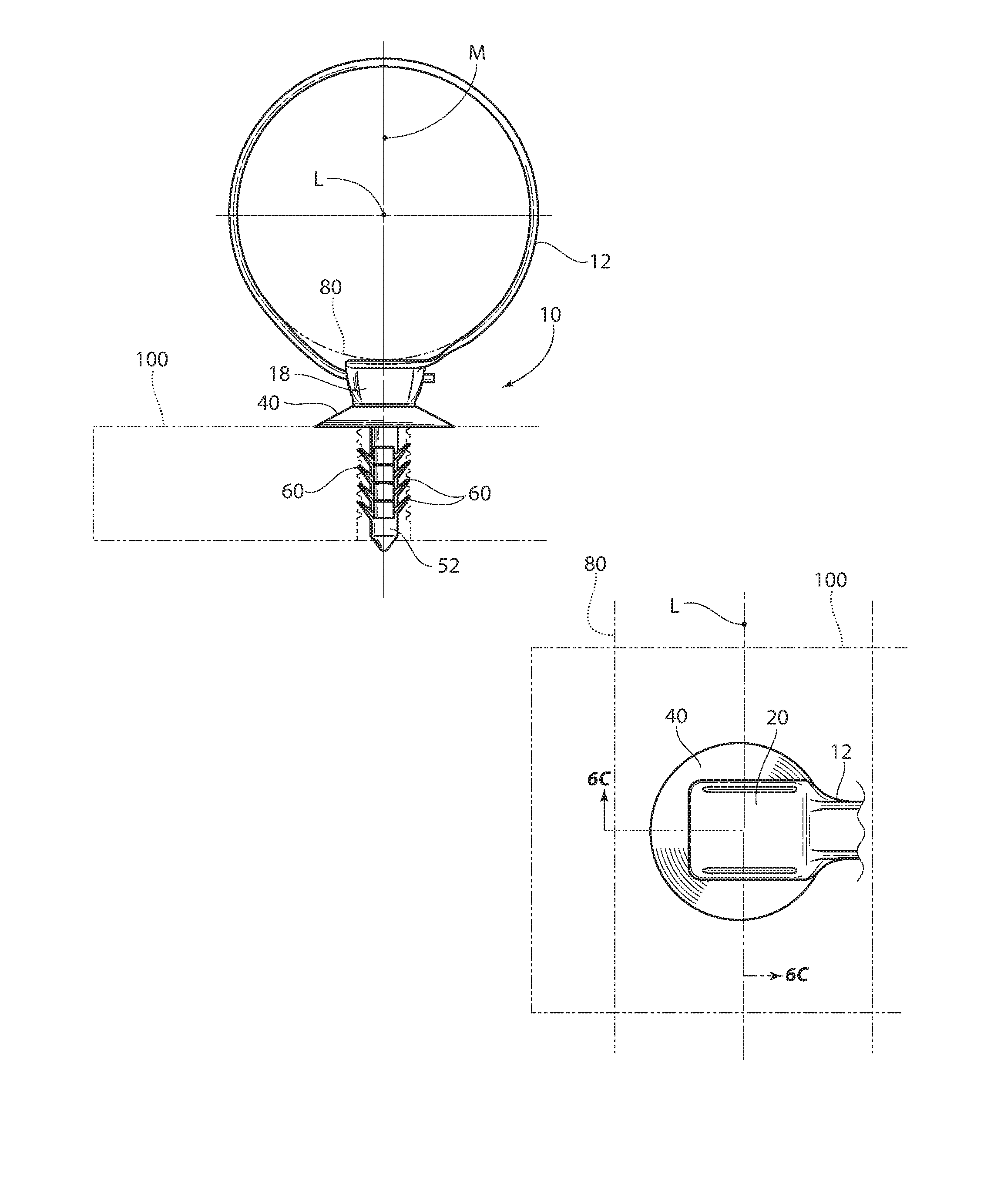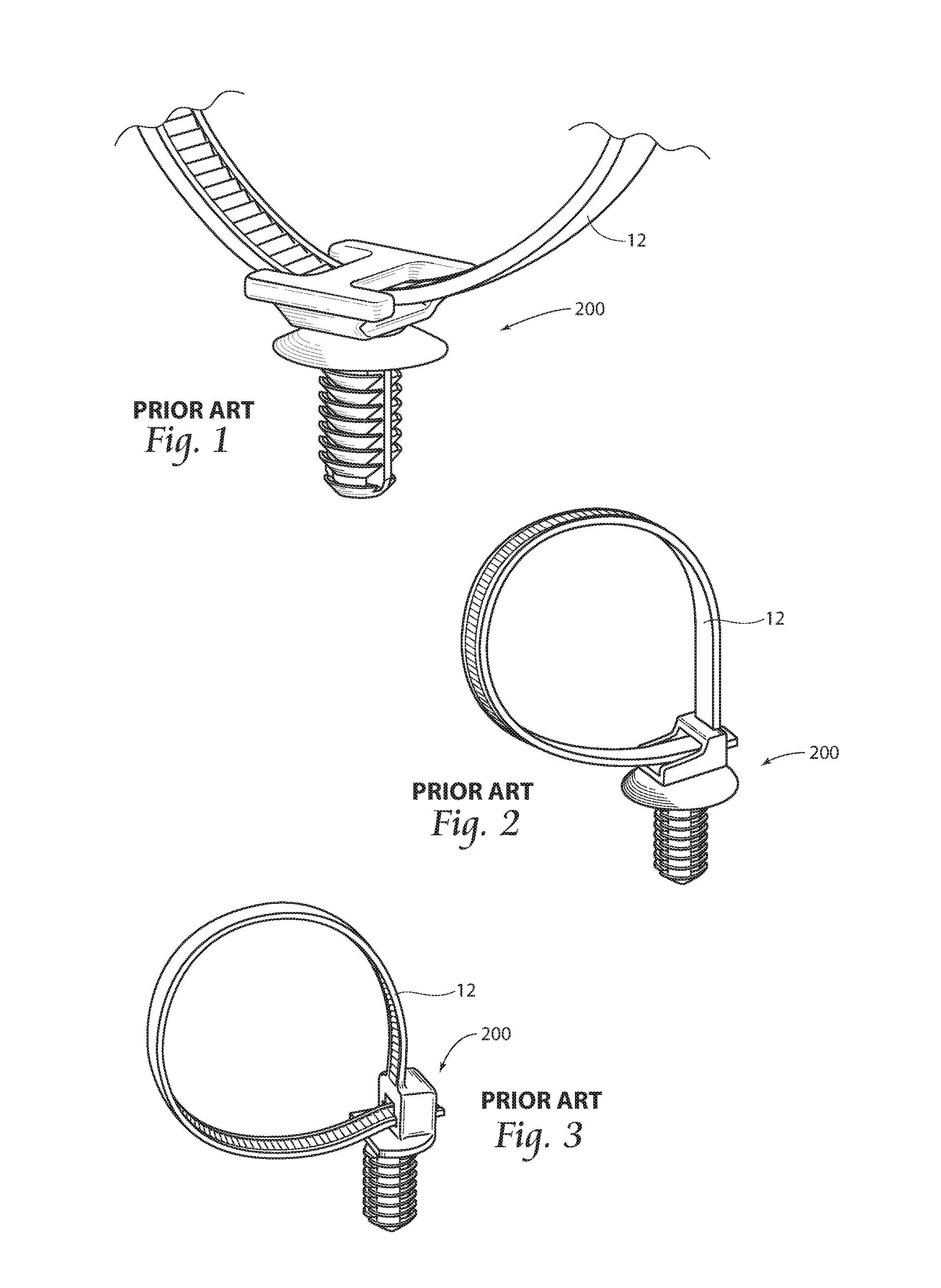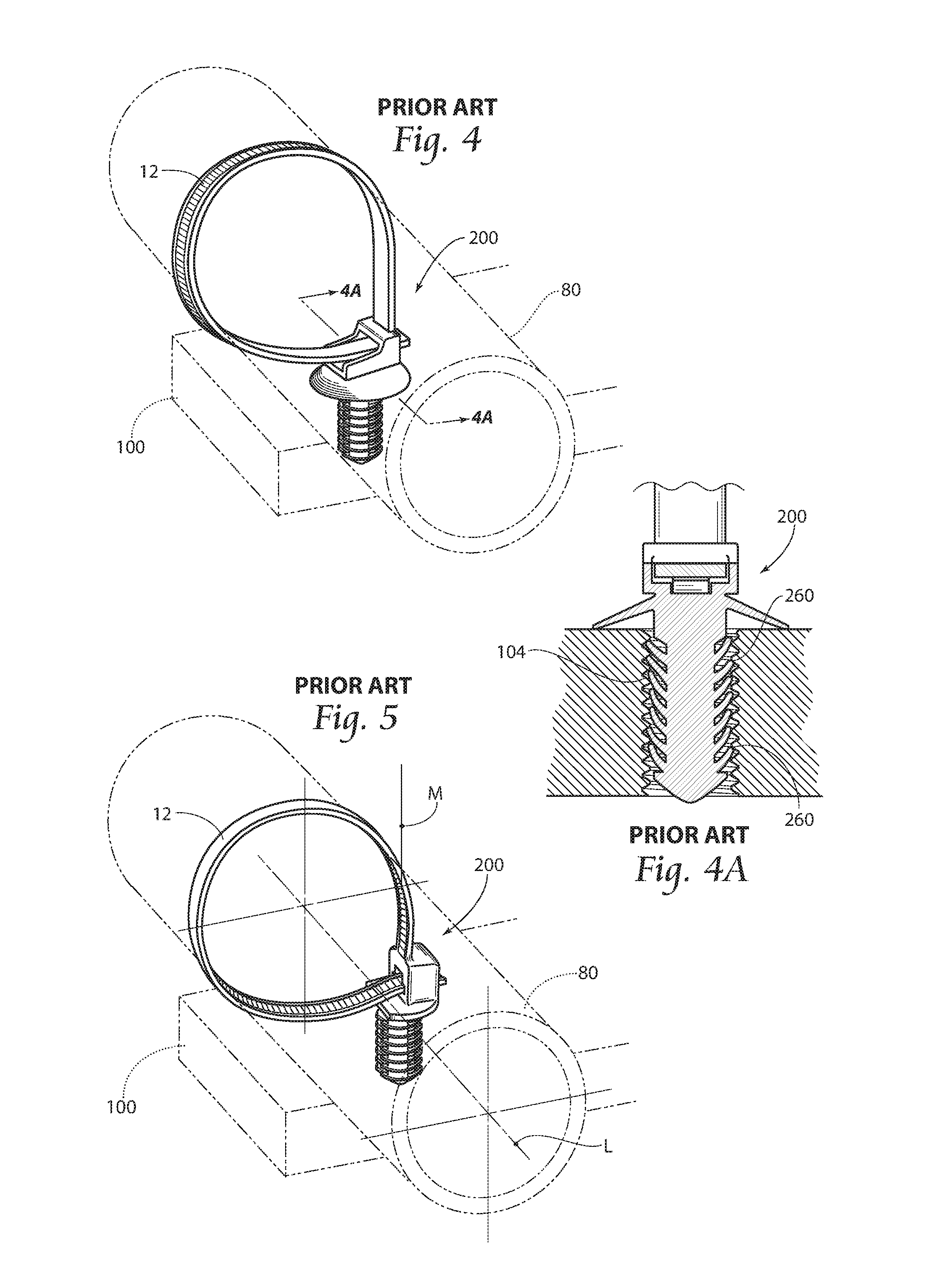Fir tree mount
a tree mount and bundle technology, applied in the field of bundle retention devices, can solve the problems of insufficient retention and tightness against the support surface of known bundle retention devices, many known mounts do not provide a high ratio of mechanical advantage and high retention strength, and many known bundle retention devices may not provide adequate retention and tightness against the support surfa
- Summary
- Abstract
- Description
- Claims
- Application Information
AI Technical Summary
Benefits of technology
Problems solved by technology
Method used
Image
Examples
Embodiment Construction
[0038]Although the disclosure hereof is detailed and exact to enable those skilled in the art to practice the invention, the physical embodiments herein disclosed merely exemplify the invention which may be embodied in other specific structures. While the preferred embodiment has been described, the details may be changed without departing from the invention, which is defined by the claims.
[0039]FIGS. 1-5B illustrate prior art mounting devices 200 which either include an integrally formed cable tie 12 or demonstrate use in conjunction with a cable tie 12. As seen particularly in FIGS. 5, 5A, and 5b, known devices 200 are not typically arranged to self-center the longitudinal axis L of a bundle 80 with the vertical axis M of a mount stud in a mounting bore. As shown, particularly in FIGS. 5A and 5B, the offset distance (OD) changes when the bundle diameter changes. Further, prior art mounts 200 having an offset arrangement and branched mounting sections may not provide adequate attac...
PUM
 Login to View More
Login to View More Abstract
Description
Claims
Application Information
 Login to View More
Login to View More - R&D
- Intellectual Property
- Life Sciences
- Materials
- Tech Scout
- Unparalleled Data Quality
- Higher Quality Content
- 60% Fewer Hallucinations
Browse by: Latest US Patents, China's latest patents, Technical Efficacy Thesaurus, Application Domain, Technology Topic, Popular Technical Reports.
© 2025 PatSnap. All rights reserved.Legal|Privacy policy|Modern Slavery Act Transparency Statement|Sitemap|About US| Contact US: help@patsnap.com



